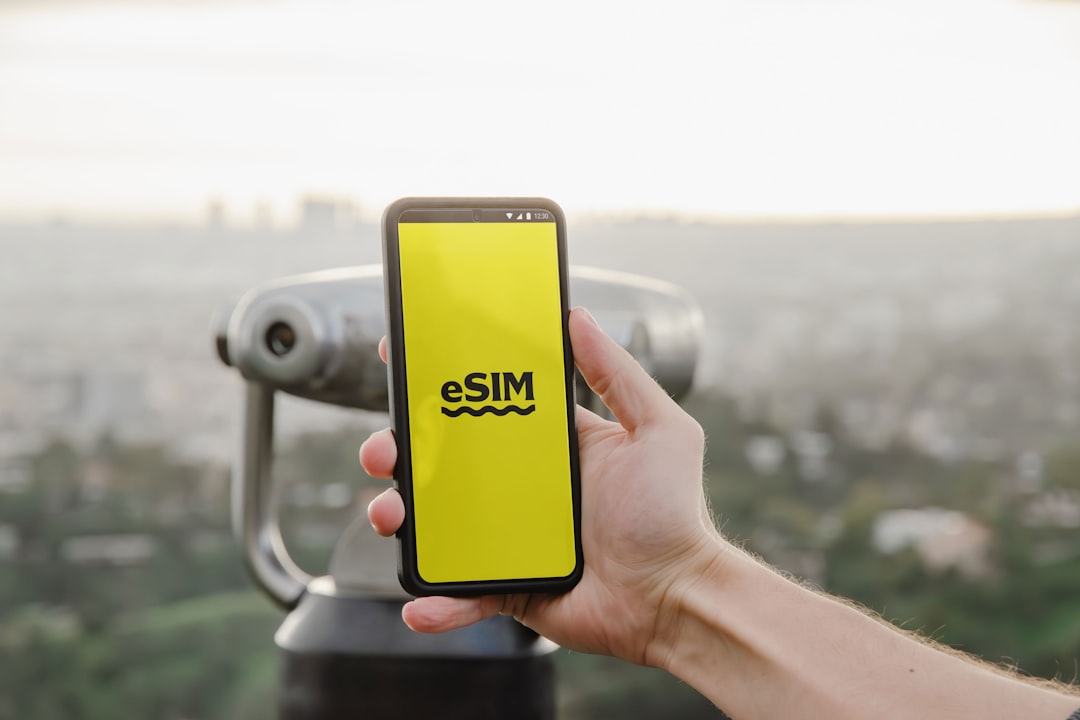Building a Global Nomad Community One Backpack At a Time

Introduction
The world is changing at a pace that would have seemed impossible a generation ago. Technology lets us work from anywhere, borders feel more porous, and the idea of “home” is evolving into something fluid and personal. For many, the digital nomad lifestyle is no longer a dream but a daily reality. Yet the freedom that comes with packing a single bag and hopping on a flight can feel lonely without a tribe that shares the same values. Building a global nomad community one backpack at a time is about more than meeting new people; it is about creating a sustainable, minimalist network that supports each traveler’s journey while protecting the planet we roam.
In this article we explore the philosophy behind minimalism and sustainable travel, the symbolic role of the backpack, practical ways to nurture a worldwide community, and the tools that make connection possible. Whether you are a seasoned wanderer or someone just beginning to consider life on the road, the ideas presented here will help you turn a solitary adventure into a shared movement.
The Minimalist Mindset
Why Less Is More
Minimalism is not simply about owning fewer things. It is a mindset that asks the question: “What truly adds value to my life?” For nomads, this question is especially urgent because every extra kilogram translates into higher flight costs, more wear and tear, and a larger ecological footprint. By stripping away the non‑essential, you free mental space, reduce decision fatigue, and create room for experiences that matter.
The practice starts with a thorough audit of your possessions. Take each item and ask:
- Do I use it daily?
- Does it support my work, health, or personal growth?
- Can I replace it with a digital alternative?
- If I lose it, will I feel a significant loss?
If the answer is no to at least two of these prompts, the item is a candidate for removal. The goal is not to become austere for austerity’s sake, but to align your belongings with the purpose of your nomadic life.
The Backpack as a Symbol
The backpack is the physical embodiment of minimalism for travelers. It forces you to confront limits, encourages thoughtful packing, and becomes a visual reminder of your commitment to simplicity. Choosing the right backpack is therefore a deliberate act.
Key considerations when selecting a backpack:
- Capacity measured in liters, typically 30–45L for most nomads.
- A sturdy frame that distributes weight evenly.
- Weather‑proof materials or a rain cover.
- Easy access compartments for quick retrieval of essentials.
- Comfortable straps and a breathable back panel.
A well‑chosen backpack not only protects your gear but also sends a message to fellow travelers: “I travel light, I travel responsibly.” That message is the first thread in weaving a community fabric.
Sustainable Travel Principles
Carbon‑Conscious Movement
Travel is inherently carbon intensive, but a nomad community can mitigate its impact through collective action. Some practical steps include:
- Choosing direct flights when possible to reduce take‑off and landing cycles.
- Offsetting emissions with reputable carbon‑offset programs.
- Using public transport, bike sharing, or walking for local mobility.
- Staying in eco‑certified accommodations that prioritize energy efficiency and waste reduction.
When a group of nomads adopts these habits, the cumulative reduction becomes significant and demonstrates that a nomadic lifestyle can coexist with environmental stewardship.
Zero‑Waste Packing
Packing light is an opportunity to adopt zero‑ waste practices. Replace single‑use items with reusable alternatives:
- Use a stainless steel water bottle instead of disposable plastic.
- Carry a compact, foldable tote for shopping.
- Bring a set of reusable cutlery and a silicone food bag for meals.
- Choose biodegradable soap and shampoo bars.
By sharing these tips within the community, you create a culture where sustainable choices become the norm rather than the exception.
Foundations of a Global Community
Shared Values as Glue
Communities thrive when members share a common purpose. For digital nomads, those purposes typically include:
- Freedom to work from any location.
- Commitment to minimalism.
- Desire to travel responsibly.
- Passion for learning from different cultures.
When these values are articulated clearly, they become the criteria for membership and the foundation for collaboration.
Inclusive Language and Accessibility
A truly global community respects linguistic diversity, cultural differences, and varying levels of access to technology. Strategies to foster inclusivity:
- Encourage multilingual introductions in forums, using translation tools where needed.
- Host events at different time zones or record them for later viewing.
- Offer low‑bandwidth options for community platforms, such as text‑only channels.
- Provide scholarships or sponsorships for members from under‑represented regions to attend meet‑ups or conferences.
By lowering barriers, you invite a broader range of voices and perspectives, enriching the community’s collective knowledge.
Tools for Connection
Online Platforms
The backbone of any worldwide community is its digital hub. Several platforms suit the nomad lifestyle:
- Discord – Offers voice, video, and text channels organized by topic. Its free tier supports large groups and can be customized with bots for reminders, polls, and resource sharing.
- Slack – Professional feel, integrates with productivity tools like Google Drive and Trello. Ideal for communities that emphasize collaborative projects.
- Mighty Networks – Combines community forums with courses and events, allowing creators to monetize content without leaving the platform.
- Telegram – Lightweight and works well in regions with limited internet bandwidth. Supports large groups and broadcast channels.
Choose the platform that aligns with your community’s priorities. For a minimalist focus, a simple Discord server with clearly labeled channels may be sufficient.
Resource Libraries
A shared repository of resources makes the community valuable beyond social interaction. Examples of useful resources:
- Packing Lists – Curated checklists for different climates and trip lengths.
- Visa Guides – Up‑to‑date information on entry requirements, digital nomad visas, and work permits.
- Remote Work Tools – Reviews of VPNs, time‑tracking software, and collaboration suites.
- Sustainability Guides – Tips for reducing waste, carbon calculators, and lists of eco‑friendly accommodations.
Encourage members to contribute and keep the library current. A living document reflects the community’s collective expertise.
Organizing Meet‑Ups and Events
Local Gatherings
Even a global community benefits from face‑to‑face interaction. Small, local meet‑ups create trust and deepen relationships. Tips for organizing successful gatherings:
- Choose a central, accessible venue such as a co‑working space, café, or community garden.
- Keep the agenda simple: introductions, a short talk on a relevant topic, and informal networking.
- Use a sign‑up sheet to gauge attendance and collect contact information for follow‑up.
- Offer a “bring‑your‑own‑gear” element, such as a quick backpack swap to share packing hacks.
These gatherings reinforce the idea that the community is not just virtual but rooted in real‑world connections.
Global Events
Annual conferences or virtual summits can bring together members from across continents. Elements to consider:
- Theme – Focus on a specific challenge like “Sustainable Packing” or “Building Remote Teams.”
- Speakers – Invite experienced nomads, sustainability experts, and local entrepreneurs.
- Workshops – Hands‑on sessions for skill building, such as repairing gear or mastering minimalist photography.
- Networking – Structured breakout rooms that match participants based on interests or location.
Even a modest virtual summit can have a lasting impact if recordings are made available for later viewing and discussion.
Stories From the Road
The Backpack That Changed a Life
Maria, a freelance graphic designer from Buenos Aires, left a corporate job after a year of feeling burnt out. She purchased a 35L travel backpack, sold most of her possessions, and embarked on a six‑month journey across South America. Along the way she joined an online nomad community that emphasized minimalism. The group’s shared packing list helped her keep her load under 10 kg, saving her money on flights and allowing her to travel longer.
When Maria arrived in Quito, she met a fellow community member who introduced her to a local co‑working space. That connection led to a long‑term contract designing brand identities for a startup in Medellín. Today Maria runs her own remote agency, employs three other nomads, and credits the community’s focus on “one backpack at a time” for giving her the confidence to simplify and succeed.
Turning a Solo Trip Into a Collaborative Project
A group of four nomads from different continents met through a Discord channel dedicated to sustainable travel. They decided to co‑author a guidebook titled Zero‑Waste Packing for the Global Nomad. Each member contributed a chapter based on their regional experiences: the challenges of staying plastic‑free in Southeast Asia, sourcing renewable energy in European co‑working hubs, and navigating recycling in South America.
The project was funded through a community‑run Patreon, and the finished e‑book was distributed freely to anyone who joined the community. The collaboration not only produced a valuable resource but also forged friendships that continue to generate joint ventures, such as a carbon‑offset program tailored for frequent flyers.
Practical Steps to Grow the Community
Start With a Core Group
Every movement begins with a small circle of dedicated individuals. Identify 5–10 people who share the same vision of minimalist, sustainable nomadism. Hold a virtual brainstorming session to define:
- Mission statement.
- Core values.
- Initial communication channel.
- Short‑term goals (e.g., create a packing checklist, host a virtual meetup).
A clear foundation helps attract like‑minded members later.
Create a Signature Resource
A well‑crafted resource serves as a magnet. Examples:
- A downloadable PDF titled “The 30‑Item Backpack Checklist” with sections for work, health, and personal items.
- An interactive map that highlights eco‑friendly co‑working spaces, hostels, and recycling points.
- A short video series on “Packing Light for Different Climates.”
Promote the resource on social media, nomad forums, and travel blogs. The resource should carry the community’s branding, reinforcing recognition.
Host Regular Virtual Meet‑Ups
Consistency builds habit. Schedule a weekly or bi‑weekly video call with a rotating agenda:
- “Show and Tell” where members display a favorite piece of gear.
- Guest speaker sessions on topics like remote job hunting or digital detox.
- Group Q&A about visa processes or local customs.
Record each session and upload it to the community library for those who could not attend.
Encourage Member‑Generated Content
Empower members to become contributors. Set up a simple submission system for:
- Blog posts on sustainable travel experiences.
- Photo essays of minimalist living in different cities.
- Tutorials on repairing gear in the field.
Feature the best submissions on the community’s main page or newsletter. Recognition motivates participation and spreads knowledge.
Leverage Social Media Wisely
Social platforms amplify reach. Use a consistent visual identity—perhaps an image of a well‑packed backpack against a world map—to make posts instantly recognizable. Share:
- Quick packing tips (one‑sentence posts).
- Success stories of members who have reduced waste.
- Calls for collaboration on projects.
Avoid over‑promotion; the focus should remain on value creation rather than self‑advertising.
Build Partnerships
Collaborate with brands, NGOs, and local businesses that align with the community’s ethos. Possible partnership ideas:
- Discount codes for minimalist gear from ethical manufacturers.
- Joint webinars with environmental NGOs on carbon offsetting.
- Co‑hosting events with coworking spaces that practice sustainability.
Partnerships provide resources, credibility, and exposure while reinforcing the community’s mission.
Overcoming Common Challenges
Balancing Growth and Intimacy
As the community expands, the sense of closeness can dilute. To maintain intimacy:
- Create smaller sub‑groups based on region, language, or interest.
- Assign community moderators who act as facilitators and keep discussions focused.
- Preserve regular “core‑group” gatherings where founding members can reconnect.
Dealing With Burnout
Nomads often face isolation and fatigue. Community leaders should:
- Encourage members to take scheduled digital detoxes.
- Provide mental‑health resources, such as links to counseling services that operate online.
- Foster a supportive environment where sharing struggles is welcomed.
Navigating Cultural Differences
Cultural misunderstandings can arise in a global setting. Promote:
- A culture‑sensitivity guide that outlines respectful communication practices.
- Open forums for members to discuss cultural nuances and ask questions without judgment.
- Celebrations of diverse holidays and traditions within the community calendar.
Vision for the Future
Imagine a world where every digital nomad carries a backpack that reflects not only personal minimalism but also collective responsibility. In such a future:
- Communities will have standardized sustainability metrics, allowing members to track the carbon savings achieved by traveling light.
- Global nomad networks will be integrated with local economies, supporting small businesses that practice ethical tourism.
- Technology will provide real‑time updates on waste‑reduction opportunities in each destination, guiding travelers toward greener choices.
- The backpack itself may evolve into a smart, modular system that alerts you when you are exceeding weight limits or suggests items to leave behind based on weather forecasts.
By building the community one backpack at a time, we lay the groundwork for these possibilities. Each new member adds a voice, each shared checklist spreads knowledge, and each collaborative project multiplies impact. The ripple effect starts small but grows into a movement that redefines travel, work, and stewardship of the planet.
Conclusion
The digital nomad lifestyle offers unparalleled freedom, but that freedom is most rewarding when it is shared and sustainable. Minimalism provides the framework to travel light, while responsible practices ensure we leave a positive footprint wherever we go. The backpack, simple yet powerful, becomes the emblem of a community that values purpose over possession.
Through deliberate actions—curating resources, hosting events, fostering inclusive dialogue, and partnering with aligned organizations—we can turn scattered individuals into a thriving global network. The journey begins with a single pack, a single conversation, a single commitment to do better. As more nomads adopt this mindset, the community will expand, and the collective impact will multiply.
Pack wisely, travel responsibly, and join the movement that builds a global nomad community one backpack at a time.
Random Posts

Mastering the Nomad Lifestyle Essential Packing Guides and Resources
Adopt a minimalist mindset: pack only items that boost work, health, safety or true joy. Treat weight as currency, choose versatile, durable gear, and travel lighter, cheaper, and freer
2 months ago

Lisbon to Tallinn A Nomad’s Guide to Europe
From sunny Lisbon’s affordable coworking scene to Tallinn’s medieval charm and booming tech hub, this guide maps the perfect nomad route, travel tips and essential info for a smooth, productive European adventure.
1 month ago

Your Complete Bali Visa Guide for Digital Nomads
Your ultimate Bali visa guide for digital nomads: compare visa types, follow easy step-by-step applications, learn how to extend your stay, and start working from paradise with confidence.
2 months ago

Tech‑Friendly European Towns Perfect for Remote Living
Discover Europe’s best small towns where fast internet, affordable living and vibrant tech communities let you work remotely while soaking up historic charm, lakeside views or mountain air.
1 day ago

Top Apps Every Nomad Needs for Seamless Remote Work
Discover the must-have apps that keep nomads connected: Slack for organized team chat and integrations, Microsoft Teams for unified messaging, video and Office collaboration, plus essential tools for reliable remote work.
2 months ago
Latest Posts

Essential Software Every Remote Professional Should Use
Master remote work with essential tools: instant messaging like Slack, high definition video calls such as Zoom, and asynchronous voice apps. Streamline communication, stay connected and boost productivity.
1 day ago

Mastering Remote Work Productivity for Digital Nomads and Freelancers
Learn proven habits, tools, and tactics that help digital nomads and freelancers stay focused, deliver quality work, and maintain a sustainable lifestyle while traveling the world.
1 day ago

Tech‑Friendly European Towns Perfect for Remote Living
Discover Europe’s best small towns where fast internet, affordable living and vibrant tech communities let you work remotely while soaking up historic charm, lakeside views or mountain air.
1 day ago